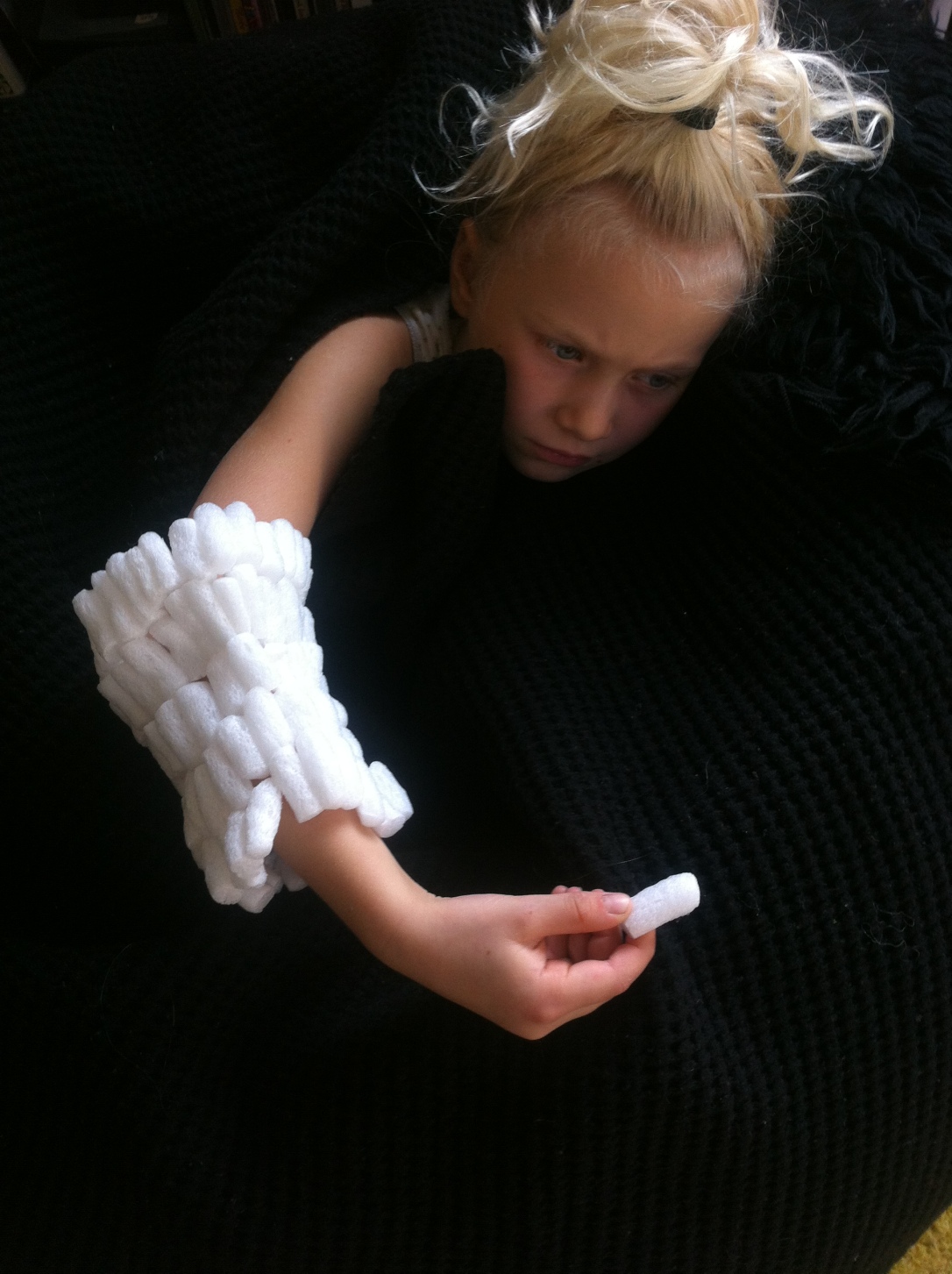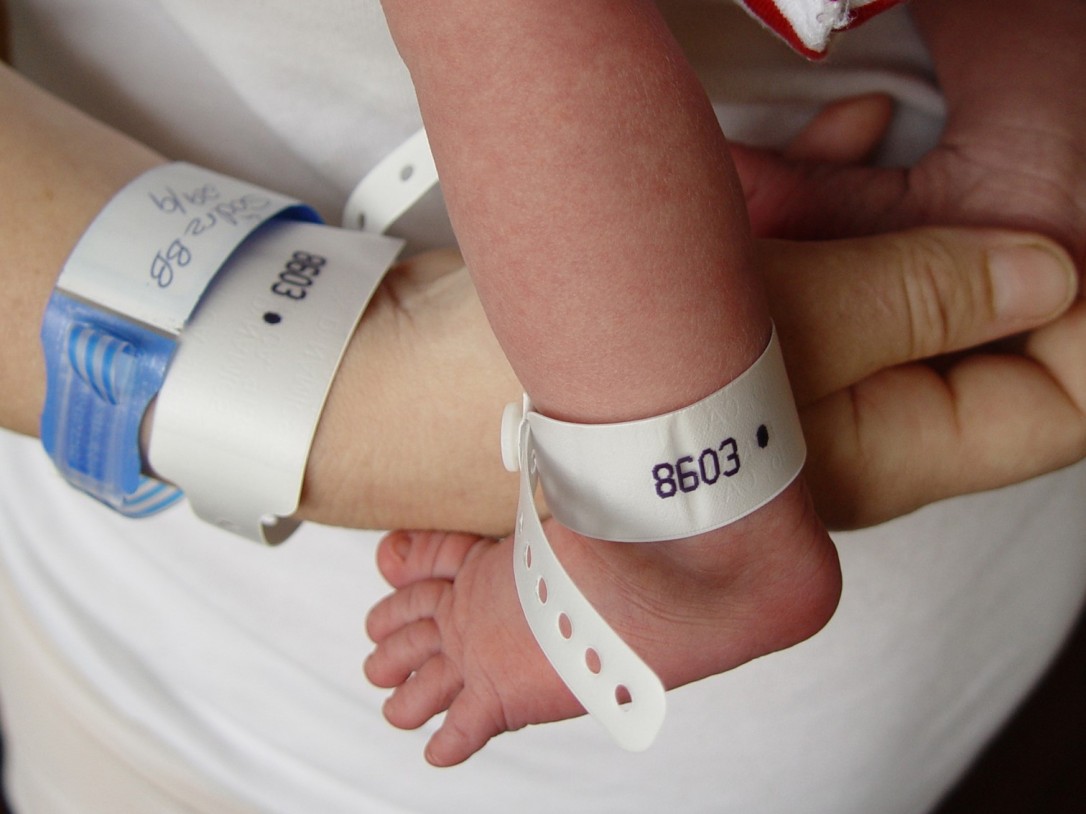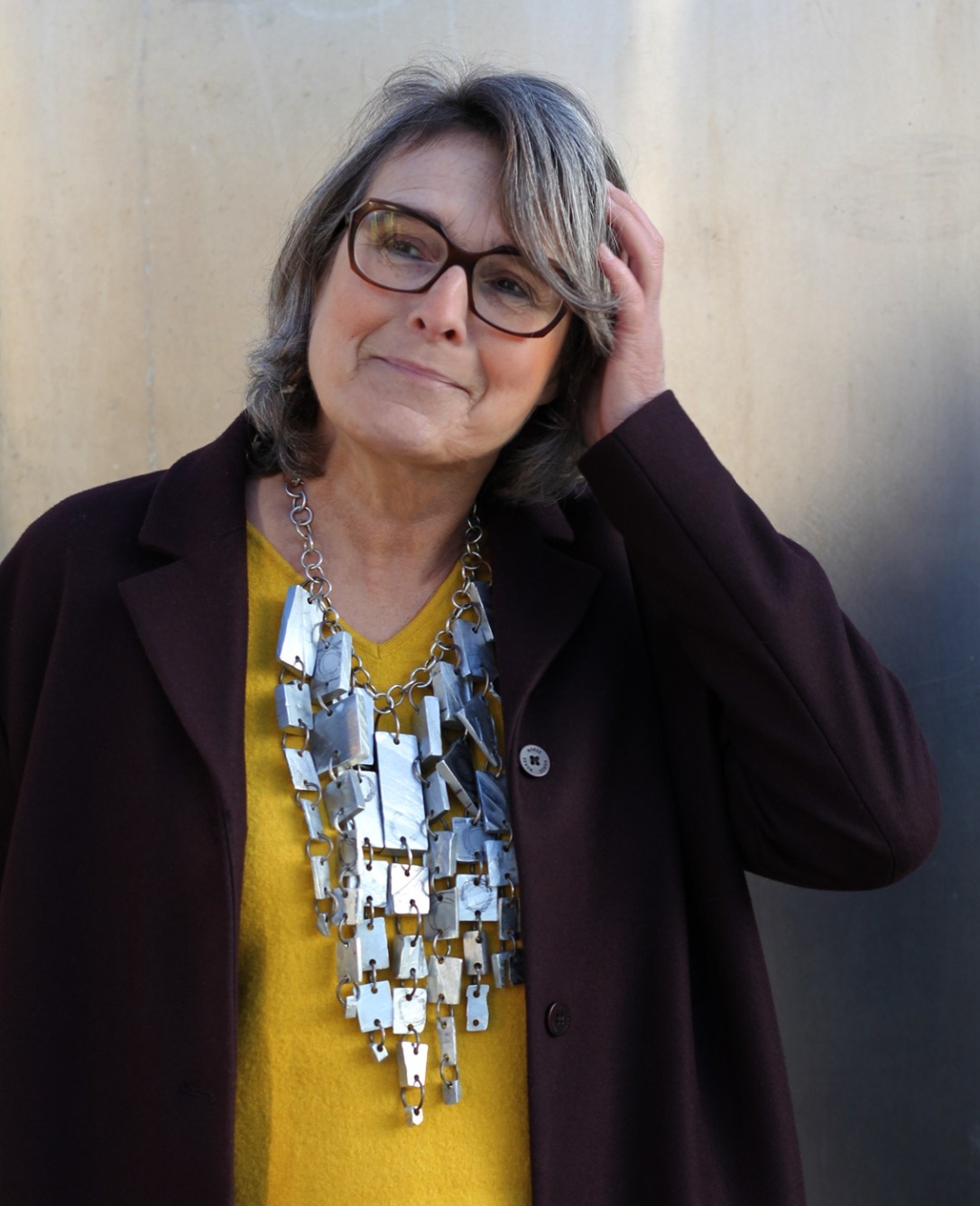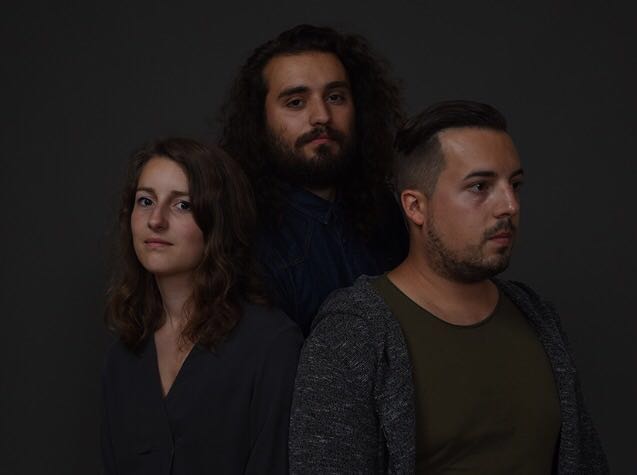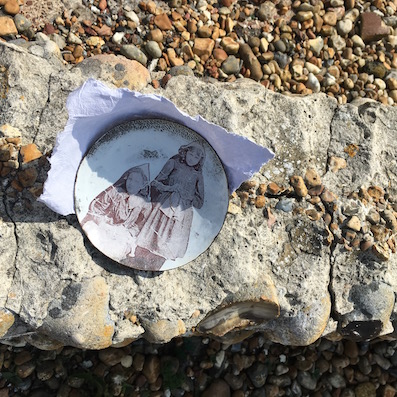
Do you find there are differences in how you work and how you approach your work now you are a mother? Please explain.
There are most certainly differences, it tends to be ‘grab time when you can’, although if I have a looming deadline that will be my priority as much as possible. This can mean there is some kind of fallout if I’ve forgotten to wash the school uniform or make the supper. It can be chaotic at times but we find a way.
If you sell your own work, you have to constantly promote yourself constantly and schmooze. I didn’t quite realise this until I was less able to do it. What was once the norm can become a formidable task as private views and work socials are at the bedtime hour. It becomes easier not to go out and for me this has stuck. It is only now that my daughter is 12 that this is becoming easier, though complicated by her recent diagnosis of diabetes. We find a way to do it but my work does become secondary. I was lucky when she was younger – my husband would support me financially and he would give his time when he could. I wasn’t earning enough through my work to justify paying anyone to help and family were too far away but would help when they could.
Because I had left an established business when I was pregnant it was slow to start over again as a maker but I kept my hand in with open house, exhibitions and special commissions. After a while I felt out of the loop, I lost touch with other makers so I decided to go back to education to refresh my skills and meet like-minded people and I am currently doing an craft Masters specializing in metals.
As my daughter is getting older, I want to be a positive role model for her, I am a mum and a maker! I want her to see that both of these roles are very important. She has started to ask if I will teach her to make jewellery so I have shown her some techniques and we are making her a ring out of copper. Previously and on her own initiative she has made jewellery out of paper and wire.
Working with materials other than precious metals has definitely been a change and a challenge and has developed my desire to work within the community, using my skills and helping to nurture and develop creativity. Playing and making with my daughter and her friends and doing kids’ workshops when she was younger reminded me of just how important creativity is and how children can open your eyes to uninhibited creative play – food for your soul. Don’t ever give it up!
My latest work for my MA is about a children’s hospital and it’s patients. It was built on the seashore in East Sussex in the 1920’s, and is now a ruin. The history of the place fascinated me and my work touches on fragility, healing and impermanence. When my daughter was first diagnosed with diabetes I did a lot of research into human cells and disease and used my findings as source material and inspiration for my practice. So my work is definitely influenced by becoming a mother and all that goes with it.
Did you work when your child was younger? What guided your decision? On reflection, how do you feel about this decision now?
I realised I was pregnant whilst leaving one job and was thinking about what to do next. Everything had been thrown up into the air, the changes were huge. I had to leave everything behind and start over but it wasn’t until my daughter was about 18 months and got a place in a daycare nursery, that I started in a new workshop and took on various commissions. She would be at nursery from 9 – 5, 3 days a week.
When she was 3 we moved from London to Hastings. All change again, however, I kept my hand in, making and exhibiting, but did less. It wasn’t a conscious decision. As a mum, your eyes and ears are more tuned to your kid’s needs than anything else. My work fitted in and around other people but it was never an option for me to completely stop, whilst my nurturing side kicked in I also missed the work routine but then I came to accept my new role and enjoyed it. There is an incredible richness in becoming a mother and your creativity finds new ways to express itself. I’m not sure this is really recognised enough though.
I feel very lucky to have been able to spend so much time in those few precious early years together. I think it’s all about finding a balance between the two though, which is difficult and not always possible.
Now you have a child, do you feel your requirements as a maker have changed in any way? Please explain.
Time is always limited and you have to be so much more organised. I have a space at home to work which helps, though it easy to get distracted with home life – it can sometimes take a long time to sit down to work when the dog needs a walk and that pile of washing needs sorting.
As I’ve said before, my daughter was recently diagnosed with Type 1 diabetes so there are unexpected days off school and hospital visits- although all parents can experience unexpected and sudden changes to well laid plans!
Instead of socialising at university I will be rushing home to get the tea on. I tend to work better in the early morning when there are fewer distractions, I am often up at 5.30am and by 8pm I can’t function so well and I’m usually in bed by 10pm.
What do you think needs to happen to make it easier to work for mothers in our field?
Perhaps there should be longer paternity leave? More dads are becoming involved with childcare and it would be helpful if there was more emphasis on this as well as financial help from the state. The Nordic model of getting help as and when you need it would be wonderful but then our government and the tax system would have to change radically which I can’t see happening for a while. As mothers we should continue to be vocal about it, so often in the work place motherhood is seen as an impediment.
Being a new mum can be isolating, schemes like Sure Start which have been axed should be readily available to all as well as places for new mums to get together and meet up and connect. I was lucky to live in an area where there were many support groups – communication is a real positive between mums in establishing supportive networks.
My family have always been a long way away so I could never rely on their support for childcare on a day to day level. The saying ‘it takes a village to raise a child’ can be much less so in the western world as communities and demographics change. New mums shouldn’t be worried about asking for help. I was very lucky to get a place in the local day care centre, I had put my daughter’s name down before she was born! It was a very good nursery but the waiting list was very long. It should be easier for mums to get their free childcare. More creches in the workplace would also be helpful.
What for you are the main differences between being a female maker without children and being a female maker with children?
I don’t think you can fully empathise with people who have kids until you have your own, I know I didn’t understand as my younger self. I think if you put all your energies into your work something else will suffer, finding that balance is a constant struggle. As women we are expected to be the kind, caring, nurturing ones and to succeed in the workplace, we have to become more ‘male’. I think it is important for mother makers to find their own pace and space to grow and allow themselves to appreciate just how important raising a child is. Sadly, I think this society does not recognise this or encourage it.
If you could give your younger child-free self any advise on how to work with other mother makers, what would it be?
I realise it can be hard for either side, people with kids will need more flexibility and those without are expected to accommodate this. Compassion, good communication and all round understanding of everyone’s needs can go a long way.
What are your observations of mothers in arts?
The field I work in is craft where women have always been strongly represented. It is also associated with the home, and domestic life is not deemed important. Many female artists and makers have subverted this idea and have been called feminists. The feminist label would probably get you more recognition in the art world than being called a mother. The literary critic and writer Cyril Connolly arrogantly asserted back in the 1930’s that, “There is no more sombre enemy of good art than the pram in the hall.” Make of that what you will, but perhaps he believed that motherhood and domestic preoccupations were detrimental to ‘the creative self’. I believe that motherhood is an incredibly rich, inspiring and creative experience (along with all its trials and tribulations!)
There are a lot of mothers who are makers out there, quietly getting on with it but perhaps aren’t recognised as such because our society doesn’t value motherhood enough. Perhaps they don’t feel a need to shout about it and don’t necessarily want to be labeled as such. To be left quietly undisturbed is not necessarily a bad thing. But I feel workplace and motherhood is not talked about enough.
For me, one of the strongest pieces of art depicting motherhood in a positive way is Louise Bourgeois’ ‘Mamam’, which was a tribute to her own mother. And I really like spiders. Crafts have always been associated with women and that was the preferred place for them to be in a patriarchal society so the art/craft crossover has meant more women are represented in galleries but it will be a craft gallery more than an art gallery.
While overwhelming percentages of women graduate into the field each year, motherhood is rarely discussed/made public. Why do you think this is?
Perhaps mothers feel they can’t shout about being a mother in a male dominated patriarchal society. I think it can only change if women support each other here though and stay vocal about it.
Do you think it’s important to represent mothers for example it the gallery sphere?
I think it’s all about choice, if mothers want to be represented more in the gallery sphere as such, then yes why not, but I think it is equally important to retain the essence of being female , not become too male, clinical and stark as many galleries are. There is room for it all.
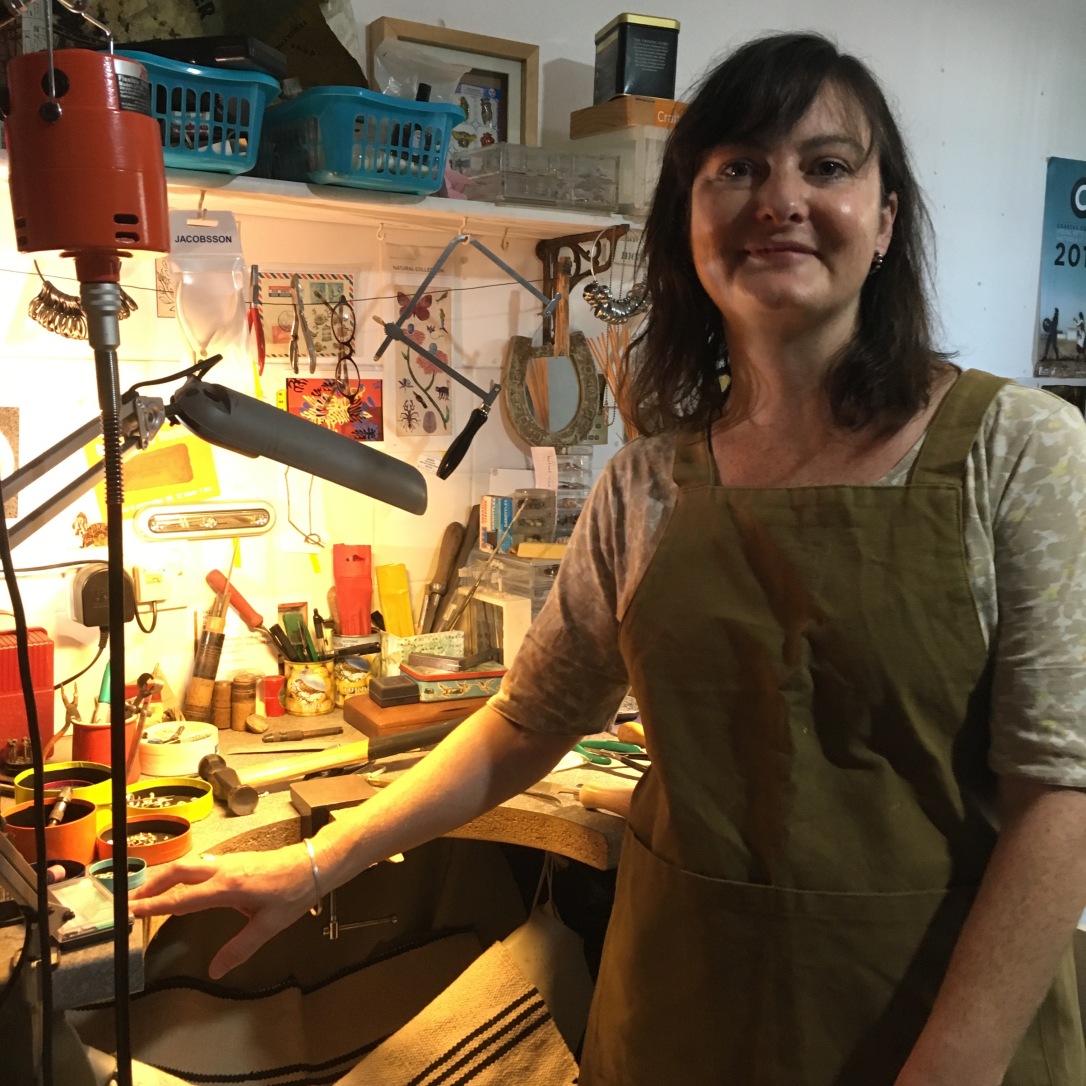
About
Amy Madge studied jewellery design at Plymouth School of Art and Design, graduating in 1990. She continued to develop her craft and distinctive designs in London whilst working for other designers such as Jacqueline Rabun and Naomi Filmer. In the late 1990’s she co-founded @Work, a contemporary jewellery gallery on Brick Lane in the heart of Shoreditch, East London that she co-ran for 6 years.
After the birth of her child and moving on from @Work, she worked with L-13 Light Industrial Workshop working alongside the artists in residence there taking on various commissions.
In 2004 she moved to Hastings and continued to focus on her own work in silver. She was involved in museum projects and exhibitions including Hastings Museum and Ditchling, open house and Coastal Currents and private commissions. In 2015 she returned to college to study for a Designer Maker BA (Hons) degree and is currently doing her MA in Craft specialising in metals at Brighton University.
She continues to live and work in Hastings and her daughter is now 12.
